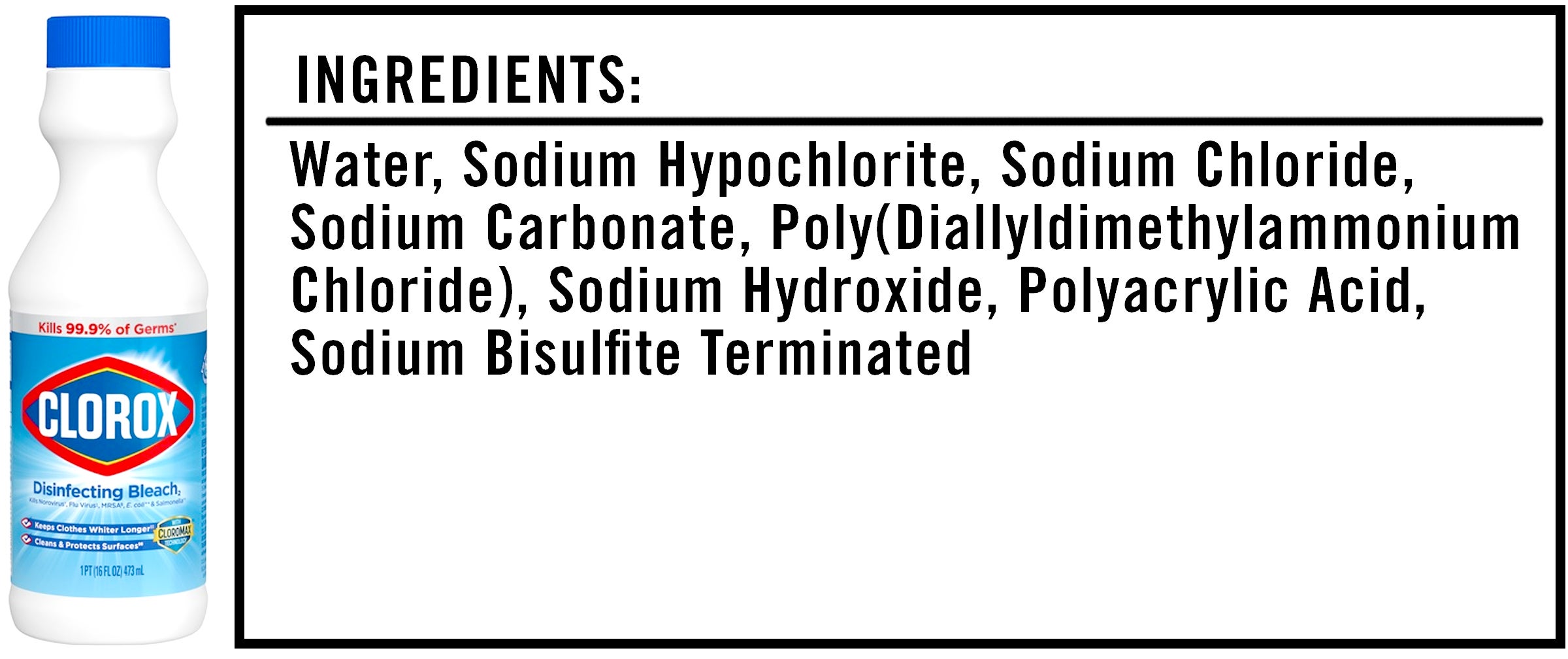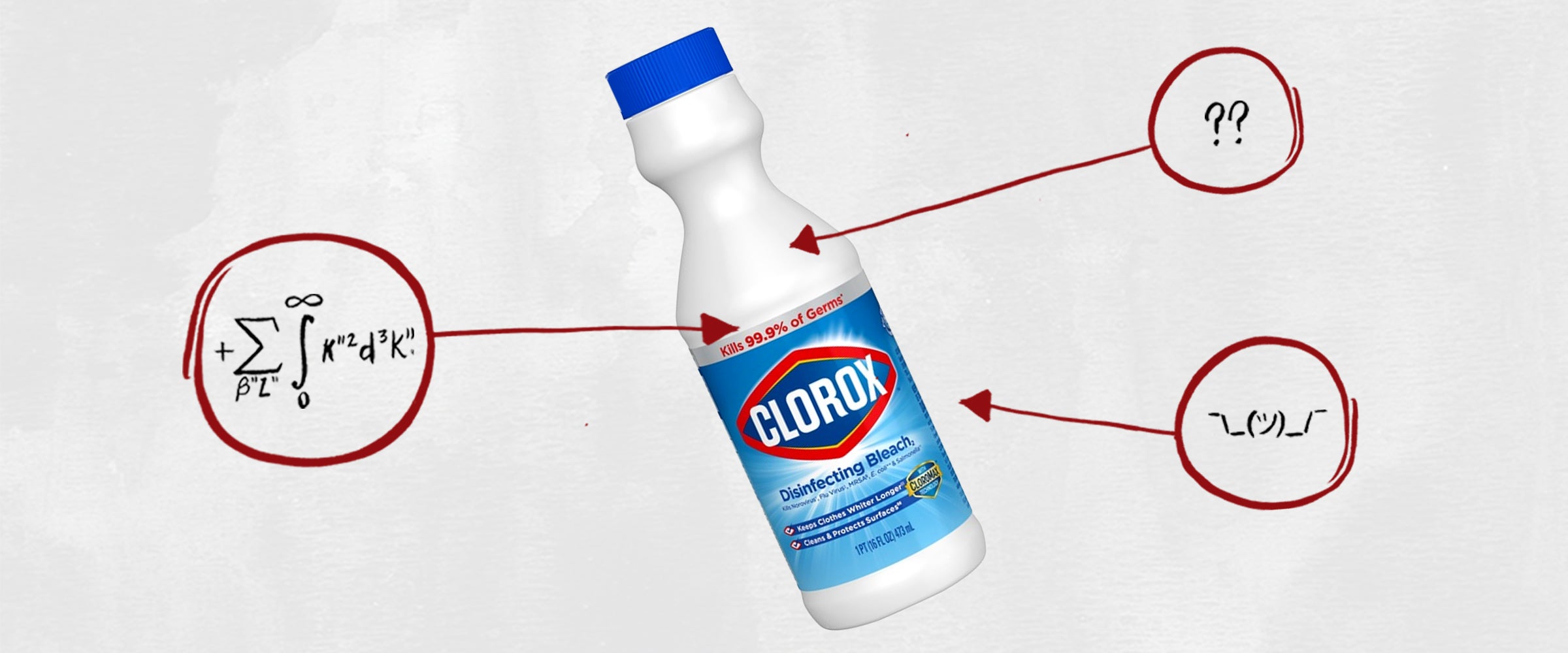We’re often told that you should never eat anything (or put anything on your body) if you don’t recognize everything on the ingredients list. But since most of us have no idea what xanthan gum or potassium benzoate are — or more importantly, what they’re doing to our bodies — we’re decoding the ingredients in the many things Americans put in (and on, or near) themselves.
This edition: Clorox Disinfecting Bleach, which is made from seven separate ingredients that we’ve broken down in the exact order they appear online.

The Ingredients
1) Water: Just plain old water. Nothing to see here.
2) Sodium Hypochlorite: Sodium hypochlorite disinfects in the same way that researchers believe pure chlorine does: It kills pathogens, such as bacteria and viruses (including the coronavirus), by seemingly breaking the chemical bonds in their molecules, essentially causing them to break down. As you may expect, consuming sodium hypochlorite can make you very, very sick, as it ravages your digestive system, which is just one of many reasons to never ingest bleach.
Sodium hypochlorite is also the culprit behind how bleach turns things white — or at least a color that we perceive as white. Essentially, it causes color molecules to oxidize, making them either reflect no color at all, or some color outside the visible spectrum of the human eye.
3) Sodium Chloride: Sodium chloride is a fancy name for table salt, which is frequently added to detergents to thicken and stabilize the formula.
4) Sodium Carbonate: Sodium carbonate, also known as washing soda, is actually a result of the breakdown of sodium hypochlorite, meaning Clorox doesn’t actively add it to this product. Nonetheless, sodium carbonate can be found in some cleaning products, especially green ones, because it has disinfectant properties and can cut through grease.
5) Poly(Diallyldimethylammonium Chloride): This ingredient, which has the gnarliest name ever, is a so-called flocculant, meaning it causes particles in liquids to aggregate so that they can be easily cleaned away (see below). It can, however, be extremely toxic, so again, use bleach with caution.
6) Sodium Hydroxide: Also known as lye, sodium hydroxide is used as a pH adjuster in many cleaning products, helping them remain stable for long periods of time, and is extremely good at removing fatty, oily and acidic soils. It can also be incredibly corrosive, hence it being good at cleaning, and can cause severe burns on any and all body parts that it comes in contact with. So again, be excessively careful when handling bleach.
7) Polyacrylic Acid, Sodium Bisulfite Terminated: These ingredients, specifically polyacrylic acid, qualify as superabsorbents, often added to laundry detergents to prevent soils from depositing onto fabrics during the laundry cycle. The science is a bit complicated, but they essentially absorb minerals that are naturally found in water during laundry cycles, which prevents those minerals from dirtying your clothes.
The Takeaway
Bleach can be a great tool for cleaning and, well, bleaching. But in the wrong hands, it can do a lot of damage, too. Nonetheless, if used sparingly and correctly — seriously, read the label, and do whatever it says — you should be just fine, and your home will be much cleaner.

